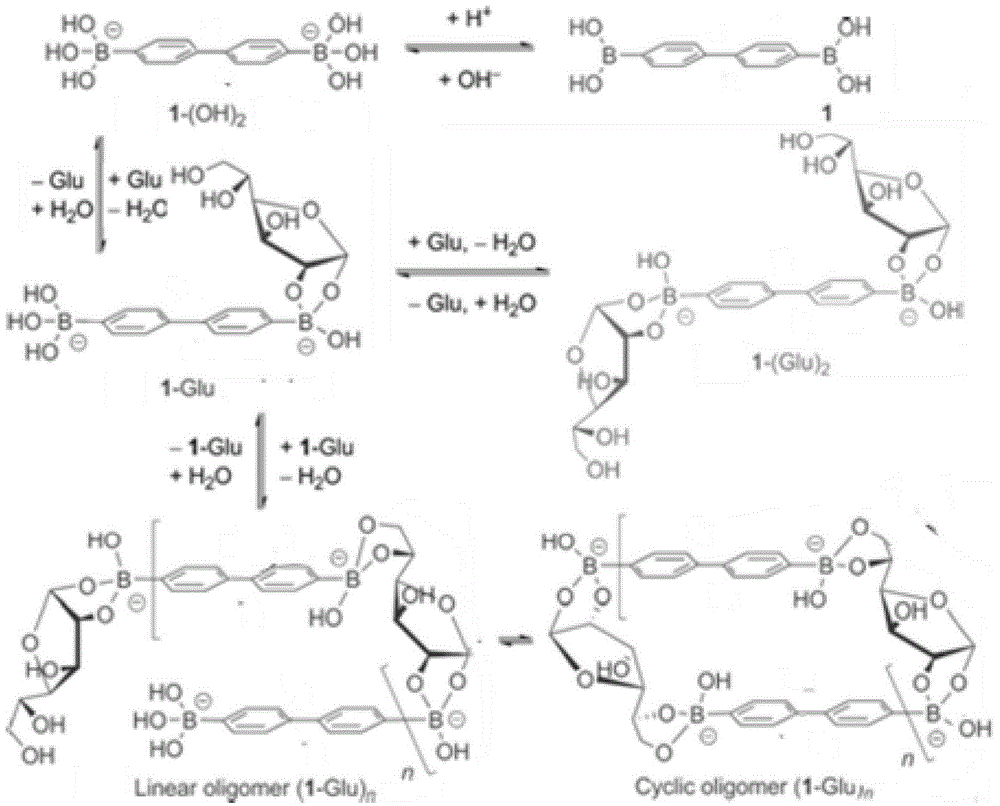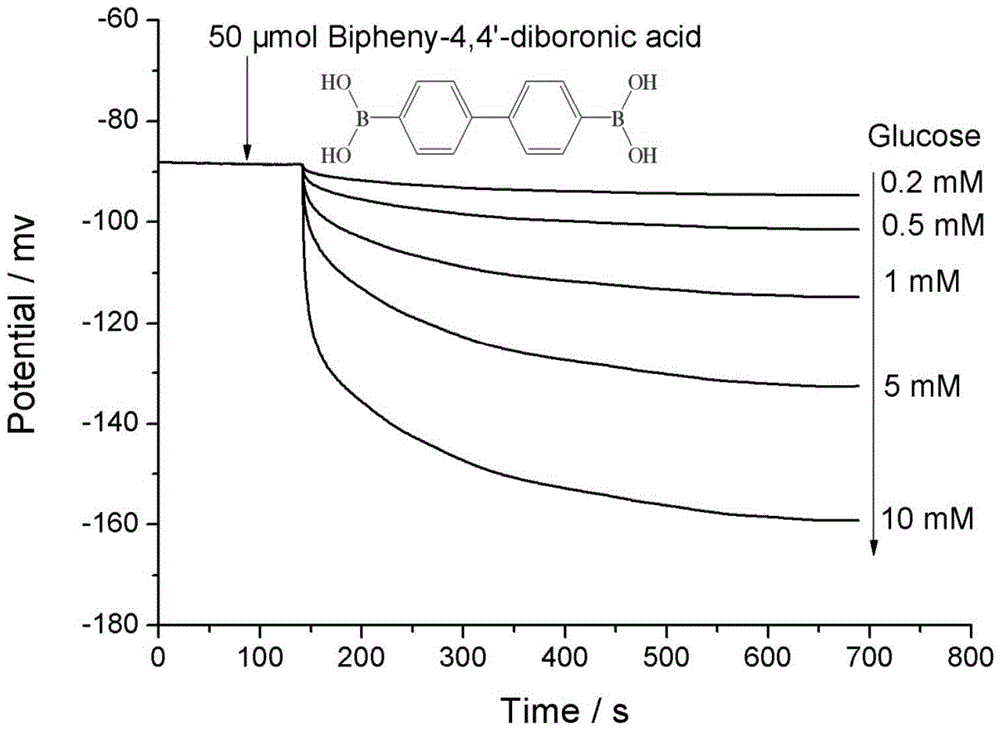Electric potential type glucose recognition element and glucose detection method thereof
An identification element and potential type technology, which is applied in the field of glucose analysis and testing, can solve the problems of cumbersome operation and achieve the effect of improving selectivity, reducing design difficulty, and easy operation
- Summary
- Abstract
- Description
- Claims
- Application Information
AI Technical Summary
Problems solved by technology
Method used
Image
Examples
Embodiment 1
[0026] The present invention uses 4,4'-benzenediboronic acid as an example to detect glucose. The operation steps are as follows:
[0027] (1) Preparation of polymer membrane electrodes
[0028] Weigh 196mg of polyvinyl chloride, 196mg of o-nitrophenyloctyl ether, and 4.54mg of tridodecylmethylammonium chloride and dissolve them in 3.5mL of tetrahydrofuran. in the glass ring. After the tetrahydrofuran was volatilized, the membrane was cut into small discs with an inner diameter of 3 mm using a puncher and pasted on the tip of a pipette with a PVC tube at the bottom. Use 10mM NaCl solution as the inner filling solution and activation solution to activate the electrode, ready for use.
[0029] (2) Potential detection of glucose
[0030] 50 mM 4,4'-benzenediboronic acid was prepared in dimethyl sulfoxide, and then added to a PBS buffer solution with a pH of 7.4 so that the final concentration of 4,4'-benzenediboronic acid was 50 μM, and the potential value was recorded. Afte...
Embodiment 2
[0032] The present invention uses 4,4'-biphenyl diboronic acid as a probe to detect glucose as an example. The operation steps are as follows:
[0033] (1) Preparation of polymer membrane electrodes
[0034] Weigh 196mg of polyvinyl chloride, 196mg of o-nitrophenyloctyl ether, and 5.76mg of tetradodecyl ammonium chloride, dissolve them in 3.5mL of tetrahydrofuran, stir them evenly, and pour them into a glass ring with an inner diameter of 3.5cm fixed on a glass plate middle. After the tetrahydrofuran was volatilized, the membrane was cut into small discs with an inner diameter of 3 mm using a puncher and pasted on the tip of a pipette with a PVC tube at the bottom. Use 10mM NaCl solution as the inner filling solution and activation solution to activate the electrode, ready for use.
[0035] (2) Potential detection of glucose
[0036] Use dimethyl sulfoxide to prepare 50 mM 4,4'-biphenyl diboronic acid, and then add it to the PBS buffer solution with a pH of 7.4. Add the ab...
PUM
 Login to View More
Login to View More Abstract
Description
Claims
Application Information
 Login to View More
Login to View More - R&D
- Intellectual Property
- Life Sciences
- Materials
- Tech Scout
- Unparalleled Data Quality
- Higher Quality Content
- 60% Fewer Hallucinations
Browse by: Latest US Patents, China's latest patents, Technical Efficacy Thesaurus, Application Domain, Technology Topic, Popular Technical Reports.
© 2025 PatSnap. All rights reserved.Legal|Privacy policy|Modern Slavery Act Transparency Statement|Sitemap|About US| Contact US: help@patsnap.com



